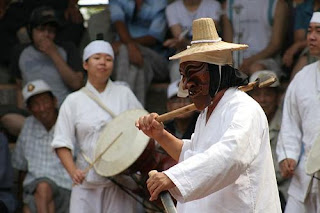I've been working on my magnolias project this week but as I have a full time job as well I don't get as much time as I'd like to concentrate on it. Despite that, it's going really well and I'm experimenting a bit at the moment with the 3 cutouts, doing each one in a different way. I'll show you them all very soon.
Next week I'm off to Korea for a week with 2 of the ladies from my Hanji group we have a jam packed week in store as we go searching for Hanji supplies and we'll even fit in a visit to the Andong Hanji factory and a 4 hour lesson with their resident hanji artist, Gui-Sook Yang. It's all very exciting and going to be lots of fun.
Next week I'm off to Korea for a week with 2 of the ladies from my Hanji group we have a jam packed week in store as we go searching for Hanji supplies and we'll even fit in a visit to the Andong Hanji factory and a 4 hour lesson with their resident hanji artist, Gui-Sook Yang. It's all very exciting and going to be lots of fun.
Whilst we're in Andong we'll be staying in this traditional Korean home in Andong Hahoe Village.
Traditionally, Koreans slept on the floor and so will we. In an old-style Korean house, the ondol (underfloor
heating) warms up the thick masonry floor, making sitting, eating, or
sleeping on it cozy and comfortable. It wasn't until around the 1970s
that the nuclear family came to be considered standard in Korea. Before
that, most families consisted of at least three generations living under
one roof. With no separate dining or living rooms, at meal times family
members would bring in a low table. They would sleep in the same room
by bringing out their folded mattresses (yo), blankets and pillows at bedtime.
The rooms are generally lined with hanji paper over the windows, on the walls and on the floors as well.
The rooms are generally lined with hanji paper over the windows, on the walls and on the floors as well.



Comments
Post a Comment